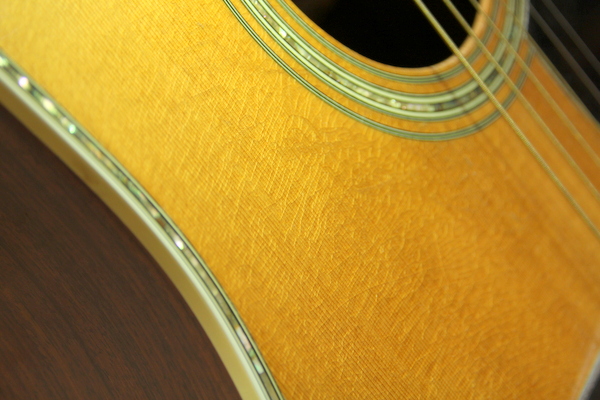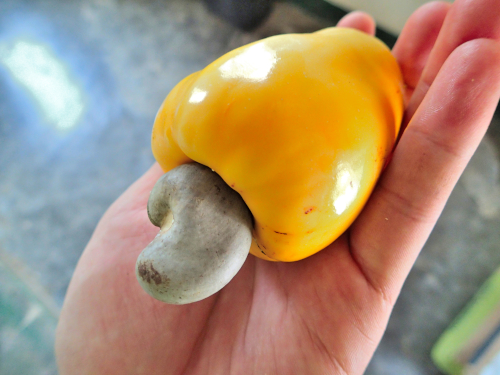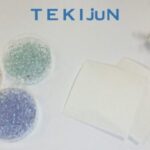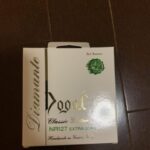This post is also available in:
![]() 日本語 (Japanese)
日本語 (Japanese)
The final step in building a guitar is coating. There are many different methods of finishes, each with its own advantages and disadvantages. Classical guitars have a tendency to favor shellac, but there is nothing wrong with other types of paint.

The articles on this site about classical guitar materials and the instrument itself are summarized in the following articles:
Finishes to protect and enhance the sound of the guitar
The primary purpose of finish for a guitar is to protect the surface.
Classical guitars are made of wood, except for the peg, strings, strings, frets, saddle, and nut. Wood is soft, which is why it sounds so good, but it’s also weak. If the surface is uneven and exposed, it can be damaged by a slight scratch.
To protect the surface of the wood, it is finished.
There is also the aspect of adjusting the sound by this because the sound changes when it is finished.
Five major types of finishes
There are five main types of finishes used on classical guitars.
- Shellac
- Lacquer
- Polyurethane
- Cashew (Anacardium occidentale)
- Oil finish
I will write about the characteristics of each.
Shellac made from insects
First, there is the shellac coating, which is the oldest and most commonly used on high-end classical guitars.
Made from the secretions of lac beetles
Shellac is made from an insect called the lac beetle. You can see what it looks like at this link, but if you don’t like insects, you probably shouldn’t look.
Shellac varnish is made by treating the fluid secreted by these insects.
In fact, shellac itself has a brown color, but when bleached, it becomes transparent.
Eco-friendly finish that is gentle on humans and nature
This shellac is the only natural resin that is thermosetting.
Because it is a natural material, it is gentle to humans and nature, harmless to eat, and returns to nature when discarded. For this reason, in addition to coatings, it is also used to coat chocolate and gum, and to bond electronic components.
Interestingly, it is used for the coating of medicines that do not dissolve in the stomach but dissolve in the intestines, taking advantage of its acid-resistant properties.
Used since 2000 B.C. and dedicated to the Shosoin Repository
Shellac and humans have a long history, and there are records of its use in China as far back as 2000 BC.
In Japan, the Shosoin Repository in Nara is said to have been dedicated to shellac in its raw state.
Finished thin and does not kill the resonance
The advantage of this shellac is that it can be finished thinly.
The thicker the finish, the stronger it becomes, but it kills the sound of the instrument.
Shellac can be coated using a method known as French polish to achieve a thin coating thickness. This is why it is used on high-end guitars. This is how it is applied:
According to Yamaha’s website,the thickness of a coat of shellac when French polished is 20 to 30 microns, and 150 to 300 microns when sprayed with varnish. Therefore, it can be said that shellac can be used to create an ultra-thin coating, and the thickness can be easily controlled. Of course, this requires more coats of paint.
The reason it is only used on high-end guitars is that French polish requires a lot of skill and time. Even if you apply the finish fast, it takes time to dry, so it takes time to apply many coats of French polish.
Surprisingly durable
There is a weak image on shellac coatings, but it is not such a thing unexpectedly.
It has excellent abrasion resistance and does not chip easily even if it is rubbed.
It also has the property of being insoluble in organic solvents other than oil and alcohol. This point is superior to lacquers which react with rubber.
Sensitive to moisture and temperature/humidity
I think this is the reason why shellac paint is considered to be weak for guitar players.
Shellac is a very strong coating under normal conditions, but under high temperature or humidity conditions, it will melt again. This will cause the finish to turn cloudy, peel off, or stick to the inside of the case.
This characteristic is troublesome when you are playing the guitar. When you play the guitar in half-dressed clothes, the finished surface will inevitably come into contact with your bare skin. Your body heat and sweat will cause the paint to become hot and humid, and the area will gradually becomecloudy.
In addition, even if it is not bare skin, the part of the chest that touches the guitar is also prone to sweating and cloudy white.
Furthermore, if you put it in a case and leave it in the car, it will be in a high temperature condition and the hair inside the case will stick to the guitar.
For the countermeasure,
- Avoid bare skin contact with the guitar.
- Put a piece of cloth between the places that you touch all the time.
- Never leave your guitar unattended in the car.
are the good place to start.
It is also necessary to prevent the effects of condensation, so in addition to humidity, temperature should also be controlled.
I took these measures too, but my shellac coated guitar still turned cloudy…
It is also strictly forbidden to be exposed to moisture for a long time, so be careful of rain. It is also sensitive to alcohol, so spilling alcohol…
Can be refinished
Even if it becomes cloudy, it is relatively easy to finish again with shellac finish.
For this reason, I think it is better to play enough with only the minimum measures rather than not playing for fear of clouding.
Lacquers are often used on acoustic guitars
Next is the lacquer.
Lacquer is more commonly used on acoustic guitars, but Hermann Hauser also uses lacquer on classical guitars.
Generally speaking, lacquer and shellac are both lacquers, but legally speaking, nitrocellulose is a lacquer
To begin with, what is a lacquer?
Lacquer is a type of paint, generally colorless or tinted, that dries by volatilizing solvents to give a hard, durable coating that can be polished to a very high gloss and depth.
From Wikipedia.
According to this definition, Urushi, is a traditional Japanese paint, and shellac, which is dissolved in alcohol, are both types of lacquer.
For your information, the origin of “lacquer” comes from the lac beetle, which is the raw material for shellac.
It is said that the one that “nitrocellulose” is a main ingredient is defined as a lacquer by the Household Goods Quality Labeling Law in Japan
Nitrocellulose, which is mainly composed of plant fibers
This nitrocellulose is made by chemically processing cellulose, or plant fibers (cell walls).
It was developed in the 1920s and was first used mainly for painting automobiles. Thanks to this coating, the variety of colors in automobiles increased dramatically.
You can spray paint it, but it takes time.
This lacquer, not French polish like shellac, can be painted at once using a spray.
However, if it is applied thickly all at once, it is easy to cause poor curing, and it is necessary to repeat thin application and drying, thin application and drying.
For this reason,it takes longer, though not as long as shellac, and is used only for high-end instruments.
Weather cracks due to the time it takes to fully cure
One of the characteristics of lacquer coating is the formation of cracks in the paint called weather cracks over time.

The lacquer may look like it is completely cured, but it actually takes time to fully cure.
As it cures, the paint gradually shrinks and eventually cracks as the thinner contained inside is released. This is weather crack. In the world of acoustic guitar, it is prized as a testimony of vintage guitar.
You can also enjoy the change in the sound of the guitar because the thickness and hardness of the paint changes.
Vulnerable to rubber and acetone
Lacquer is more sweat resistant than shellac.
However, lacquer also has a weak point. That is, it is weak against rubber (petroleum-based substance) and acetone.
When it touches rubber, it causes a chemical reaction and melts. Since the paint was originally melted with petroleum solvents, it will dissolve when it comes in contact with petroleum-based substances.
The scary part about this is the non-slip parts of guitar stands and some guitar supports. Never leave the rubber touching as it is said to melt overnight.
It also has the property of dissolving in thinner and acetone. The most familiar type of acetone is nail polish remover. Never touch a lacquered guitar with a hand that has nail polish remover on it, or pour nail polish remover on it.
Polyurethane, often used on cheap guitars but not necessarily a bad paint.
Polyurethane paint is often used, including on cheap guitars. However, it’s not necessarily a cheap or bad coating.
Cures without solvents, so it’s strong, but can’t be reapplied.
What makes polyurethane coatings different from shlleac and lacquers is that they cure without solvents.
There are two-component polyurethanes and one-component polyurethanes, both of which cure by chemical reaction.
Shellac and lacquer are dissolved in a solvent, and then they clump together as the solvent volatilizes. For this reason, they will dissolve if they come in contact with something similar to the solvent again (such as lacquer – rubber).
Polyurethane, on the other hand, is cured by a chemical reaction, so once cured, it is irreversible.
Conversely, it is not possible to dissolve it with a solvent and repaint it. For this reason, once a scratch is made, it is difficult to repair and the only way is to scrape off the paint and repaint.
It’s actually elastic, soft, and therefore strong.
Polyurethane has a strong image, but the painted surface is actually elastic and soft.
This makes it resistant to the expansion and contraction of the wood and allowsthe beautiful painted surface to be maintained for a long time.
In addition, it does not harden gradually like a lacquer, but hardens at once by a chemical reaction, so it does not change like a weather crack.
Coating thickness can be controlled by layering
Polyurethane paint is often associated with a thick coating, but the thickness of the polyurethane coating itself can be controlled by applying layers of paint, and it is possible to achieve an ultra-thin finish.
Jose Ramirez uses a urethane coating even on his higher-end instruments, but it keeps the effect down by making it ultra-thin.
The time to cure is short, so it can be finished cheaply
Like lacquers, polyurethanes need to be applied in layers, as a sudden thick finish will cause poor curing. However, because of the fast curing time, the next coat can be applied immediately, which results in lower costs. This is why it is used on cheaper guitars.
However, if you want a cheap finish, the less time you spend on one guitar, the better, and I think that cheap guitars are painted thicker at a time to reduce the number of coats.
Unique to Japan? Cashew
Cashew coating is major in Japan because it is used by Kono Guitar Manufacturing, a big classical guitar maker in Japan.
I haven’t seen cashew finish on many foreign guitars, so it may be unique to Japan.
Resin made from the oil squeezed out of the cashew nut shell
The name “cashew” may remind you “cashew nuts”. Actually cashew finish is made from cashew nuts.

The cashew nut looks like the picture above, but the tip is the cashew nut we eat. Inside this shell are the cashews we eat.
The shell contains oil, of which the resins “cardanol” and “cardol” are the raw materials for the paint.
By the way, the yellow part where the nuts are attached can also be used to make liquor or jam.
Characteristics are almost the same as Urushi lacquer
The cashew coating’s characteristics are almost identical to those of Urushi, a traditional Japanese coating.
The appearance is close to lacquer, and the result is a plump but highly transparent look.
Easier to handle than Urushi
Nevertheless, this coating is easy to handle because it does not cause a rash, which is troublesome with Urushi.
It also takes time to dry cashew, but it is easier than Urushi.
Extremely durable
As you can see from the fact that it is almost the same as Urushi, it is extremely durable.
Urushi lacquer is so resistant to moisture and wear that it is used for tableware. It is also resistant to chemicals and does not react with petroleum solvents or rubber.
It is also said to be more resistant to heat and sunlight than Urushi. It does not become cloudy even when exposed to heat or alcohol.
It is also an excellent coating for musical instruments due to its high hardness and elasticity.
I also have a cashew painted instrument, and even though I repeatedly stick and remove the suction cup for support every day, it doesn’t affect the paint at all.
Oil finish that brings out the tactile quality of the wood
The last is the ultimate thin coating, oil finish.
The painting process we have introduced so far creates a film (coat) of paint on the surface of the wood. For this reason, you cannot feel the wood by touching it with your hands, but you touch the paint film.
In contrast, oil finish is a coating that soaks the wood with oil. It does not form a film, so when you touch it, you can directly feel the unevenness of the wood.
On classical guitar, Kevin Aram often uses this finish.
Ultimately thin
The characteristic of the oil finish is that it is thin.
Oil finishes are the least vibration-interfering coatings, in the sense that a film on the surface of the wood interferes with vibration.
Ultimately weak
On the other hand, because of its thinness, it has the weakest protective power as a coating.
The paint peels off easily because it has almost no abrasion resistance, and the lack of a film means that the wood is easily scratched if it is bumped anywhere.
It also doesn’t have the ability to block out humidity, so you have to be careful about humidity control. The neck is especially easily to be bowed.
You can enjoy the feel of wood
On the other hand, you can enjoy the feel of the wood itself, which makes the guitar more intimate to touch and play.
I think it will become a guitar that people will love, including its weaknesses.
Maintenance needs to be tailored to the characteristics of each
As you can see, each coating has its own characteristics and needs to be maintained accordingly.
It is safe to use a carnauba polish for fiinishes other than an oil finish.
Painting determines the appearance and ease of handling
As you can see, there are various types of coating and each has its own characteristics.
However, what I have introduced here is just a general theory, and I think that each instrument has its own way of devising various things including the thickness of the paint.
I don’t think it’s necessary to focus on the types of finishes when choosing a guitar, but I think it’s important to know the characteristics of your guitar’s finish and treat it accordingly after you buy it.






